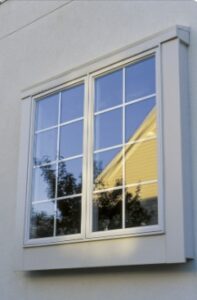 Windows are an essential architectural element that not only brings natural light into a house but also adds character and style to its overall design. There is a wide variety of window styles available, each with its unique features, functionality, and aesthetic appeal. In this article, we will delve into the different styles of windows commonly found in houses, highlighting their key characteristics and benefits.
Windows are an essential architectural element that not only brings natural light into a house but also adds character and style to its overall design. There is a wide variety of window styles available, each with its unique features, functionality, and aesthetic appeal. In this article, we will delve into the different styles of windows commonly found in houses, highlighting their key characteristics and benefits.
1. Single-Hung and Double-Hung Windows
Single-hung and double-hung windows are two of the most commonly chosen window styles for homes and buildings. Single-hung windows have a distinct feature where only the bottom sash is movable, while the top sash remains fixed in place. On the other hand, double-hung windows provide the option to open both the top and bottom sashes. This flexibility in opening options allows for better control of ventilation in a room or space.
One of the main advantages of single-hung and double-hung windows is their ability to provide excellent ventilation control. With the option to open one or both sashes, homeowners can easily regulate the amount of air flow entering a room. This is particularly useful during hot summer months when fresh air is needed to keep the space cool and comfortable. Additionally, during colder seasons, these windows can be closed tightly to prevent cold drafts from entering, helping to maintain a warm interior temperature.
Another benefit of these window styles is their ease of cleaning. Single-hung and double-hung windows are designed with functionality in mind. For example, many double-hung windows have a tilt-in feature that allows for easy access to the exterior glass panels. This means homeowners can easily clean both the interior and exterior surfaces without the need for ladders or complicated equipment. This convenience saves time and effort, making window maintenance a hassle-free task.
To illustrate the practicality of single-hung and double-hung windows, consider this example: Imagine a homeowner with a single-hung window in their kitchen. They can easily open the bottom sash to let in fresh air while cooking, preventing odors from lingering. On the other hand, a homeowner with double-hung windows in their bedroom can open both the top and bottom sashes to create a cross breeze, allowing for a cool and refreshing sleep during warm summer nights.
2. Casement and Awning Windows
Casement windows and awning windows are two popular options for homeowners looking to improve their ventilation and enhance their views. Casement windows are hinged on one side and open outward, typically operated with a crank. This design allows for unobstructed views, as there is no central frame dividing the glass pane. The ability to fully open the window also provides excellent ventilation, as fresh air can easily flow into the room.
One advantage of casement windows is their versatility. They can be installed in a variety of settings, from living rooms to bedrooms, and can complement both traditional and modern architectural styles. Additionally, casement windows are often chosen for their energy efficiency. When properly sealed, they can minimize air leakage and help to keep the interior temperature comfortable. This can result in lower energy bills and a more sustainable home.
On the other hand, awning windows are hinged at the top and open outward from the bottom. This design is ideal for areas where privacy and ventilation are key considerations, such as bathrooms and kitchens. Awning windows can be placed higher on the wall, allowing for natural light and ventilation while maintaining privacy. For example, in a bathroom, an awning window can be installed above the bathtub or vanity, providing both light and ventilation without compromising privacy.
In addition to their functionality, awning windows can also add a touch of style to a home. Their unique design can create visual interest and enhance the overall aesthetic. Awning windows are available in a variety of materials, finishes, and sizes, allowing homeowners to choose the option that best suits their preferences and complements their existing decor.
3. Sliding Windows
Sliding windows are a popular choice for homeowners who value both functionality and aesthetics. These windows are horizontally operated, meaning that they consist of two or more sashes that slide past each other. This design allows for easy operation and provides an unobstructed view of the outside world.
One of the key advantages of sliding windows is their ease of use. Unlike traditional windows that require lifting and lowering, sliding windows simply glide along a track. This makes them a great option for those with limited mobility or strength, as they require minimal effort to open and close. Additionally, the sliding mechanism allows for precise control over the amount of ventilation desired, making it easy to create a comfortable indoor environment.
In addition to their functionality, sliding windows are also highly favored for their sleek and modern appearance. They are particularly well-suited to contemporary and minimalist architectural styles, where clean lines and uncluttered spaces are valued. The horizontal orientation of sliding windows adds a touch of sophistication to any room, enhancing the overall aesthetic appeal.
Furthermore, sliding windows can be customized to fit a variety of sizes and dimensions. Whether you have a small bedroom window or a large living room one, sliding windows can be tailored to your specific needs. This versatility makes them an excellent choice for any room in your home, from kitchens and bathrooms to bedrooms and living areas.
To illustrate the benefits of sliding windows, consider the example of a homeowner who wants to maximize natural light in their living room. By installing sliding windows along one wall, they can flood the space with sunlight, creating a bright and inviting atmosphere. The unobstructed view offered by sliding windows also allows them to enjoy the beauty of their backyard or surrounding landscape.

4. Bay and Bow Windows
Bay and bow windows are popular choices for homeowners looking to enhance their living spaces with an abundance of natural light and a sense of openness. These types of windows are designed to create the illusion of a larger room by extending beyond the exterior wall, providing an expanded view of the outside world.
Bay windows typically consist of three panels, with a fixed picture window in the center and two operable windows on the sides. This configuration allows for increased ventilation and the option to let in a gentle breeze on a warm summer day. The fixed picture window in the center acts as a focal point, framing the outside scenery and creating a stunning visual display.
Bow windows, on the other hand, have a beautiful curved shape that adds a touch of elegance to any room. They are made up of four or more individual windows, which are installed in a gentle arc formation. This design allows for a wider viewing angle and brings in even more natural light compared to bay windows. The curved shape of a bow window also adds a unique architectural element to the exterior of a home, enhancing its overall curb appeal.
One of the main advantages of bay and bow windows is their ability to flood a room with natural light. This not only creates a bright and welcoming atmosphere but also reduces the need for artificial lighting during the day, helping to save on energy costs. The ample natural light provided by these windows can also have a positive impact on mood and well-being, as sunlight has been proven to boost serotonin levels and improve overall mental health.
In addition to their aesthetic and natural light benefits, bay and bow windows also offer practical advantages. The operable windows on bay windows provide excellent ventilation options, allowing fresh air to flow into the room. This can be particularly beneficial in kitchens and bathrooms, where steam and odors can quickly build up. The added ventilation can help to maintain a comfortable indoor environment and reduce the risk of mold or mildew growth.
5. Picture Windows
Picture windows are a popular choice for homeowners who want to make the most of their stunning views. These large, fixed windows are specifically designed to bring the beauty of the outdoors inside while creating a focal point in the room. With their expansive glass panels, picture windows allow ample natural light to flood in, making the space feel bright and inviting.
One of the key advantages of picture windows is their ability to provide unobstructed views. Unlike other types of windows, such as double-hung or casement windows, picture windows do not have any operating parts and cannot be opened. This means that there are no frames or mullions blocking the view, allowing for a seamless connection between the indoor and outdoor spaces. Whether it’s a picturesque landscape, a bustling cityscape, or a serene waterfront, picture windows frame these views like a work of art, creating a visually stunning backdrop for any room.
In addition to their aesthetic appeal, picture windows also offer practical benefits. By maximizing the amount of natural light that enters the room, picture windows can help reduce the need for artificial lighting during the day, resulting in energy savings and a more sustainable home. Furthermore, the abundance of natural light can have a positive impact on our well-being, boosting our mood and productivity.
Picture windows are versatile and can be used in various areas of the home. In living rooms, they can serve as a focal point, allowing homeowners and guests to enjoy panoramic views while lounging or entertaining. In bedrooms, picture windows can create a tranquil and serene atmosphere, providing a sense of connection to the outdoors and allowing for stargazing from the comfort of your bed. They can also be used in areas such as dining rooms, home offices, or even bathrooms, where privacy may not be a concern but natural light and views are highly desired.
When it comes to choosing picture windows, homeowners have a range of options to consider. They can select the size and shape of the window to suit their specific needs and preferences. For example, a floor-to-ceiling picture window can create a dramatic effect and maximize views, while a smaller picture window can be used to highlight a particular feature or view. Additionally, homeowners can choose from different materials, such as wood, vinyl, or aluminum, depending on their desired aesthetic, energy efficiency, and maintenance requirements.
6. Skylights
Skylights are windows installed on the roof, allowing natural light to filter into a space from above. They add architectural interest and can transform a room by providing an abundance of natural light. Skylights are commonly used in attics, bathrooms, and other areas where extra light is desired.
7. Jalousie Windows
Jalousie windows consist of parallel glass slats that open and close in unison. They are typically operated using a crank or lever mechanism. Jalousie windows allow for excellent ventilation control and are commonly found in tropical or warm climates.
Conclusion
Windows not only serve the practical purpose of providing light and ventilation in a house but also play a crucial role in enhancing its aesthetic appeal. By understanding the different styles of windows available, homeowners can make informed decisions when selecting windows that suit their architectural preferences, functional requirements, and personal tastes. Whether it’s the classic elegance of single-hung windows, the contemporary charm of casement windows, or the panoramic views offered by bay and bow windows, there is a window style to complement every home.
